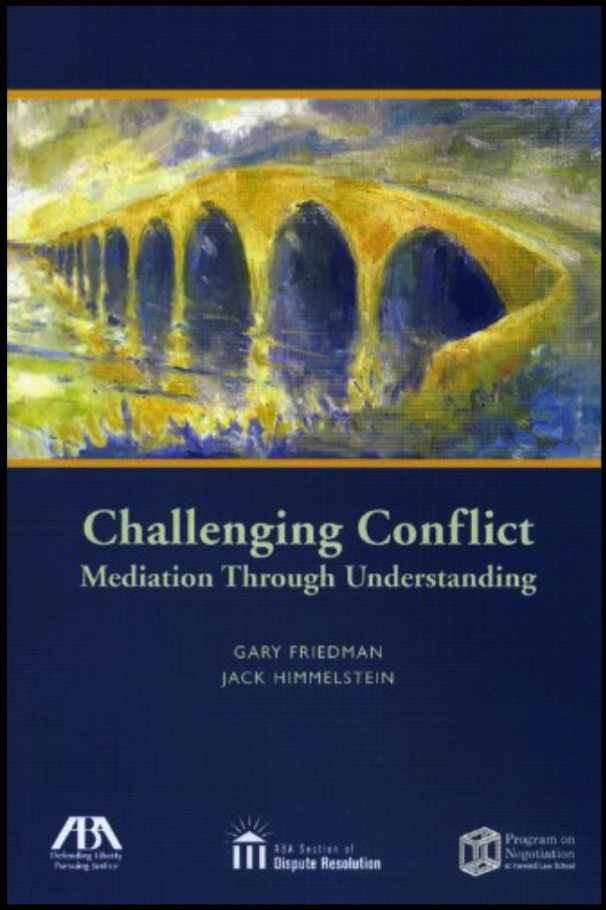
Our Mission
To train professionals and community members in the skills and self-awareness needed to bring understanding to conflict-driven conversations.
Our Vision
That people in conflict engage in authentic conversations that build understanding between them.
Our Values
We work with each other with:
- Intentionality
- Taking the time that is needed
- Consent, not coercion
- Parties’ ownership of dispute
- Transparency in the process
We show up to this work with:
- Empathy
- Compassion and kindness to self and others
- Authenticity
- Vulnerability
- Understanding
We are mindful of:
- Inclusion
- Access to understanding-based conflict resolution for everyone
- Justice – racial, social, political
- Awareness of bias, privilege, judgments, conditioning
We create:
- Quality, well-constructed trainings
- Effective and impactful experiences
- Ongoing learning for our community
Our History
At the heart of the understanding-based model is the belief that those in conflict hold the keys to unlocking resolution. Our approach is that parties can work together to find the best solution by understanding their views, the other’s views, and their practical reality. Woven into our training is transforming our emotions and opinions into sources of empathy, connection, and understanding to bring together parties in conflict. Our vision is that people in conflict will engage in authentic conversations that build understanding between them, and our mission is to train professionals and community members in the skills and self-awareness needed to bring understanding to conflict-driven conversations.
The Center for Understanding in Conflict, formerly The Center for Mediation in Law, began in earnest in 1983 as a nonprofit educational institute dedicated to integrating mediative principles into law practice and resolving legal disputes in commercial, family, organizational, and other legal and non-legal settings. Initially, the Center conducted introductory and advanced training programs for lawyers, offering its unique Understanding-based approach to conflict resolution. The application of this approach has now expanded to collaborative practice, nonprofit organizations, ombuds work, traditional legal representation, and other settings in which professionals wish to help parties work through conflict differently.
In the United States and abroad, we have trained more than 10,000 nonprofit and corporate leaders, lawyers, law teachers, judges, human resources personnel, mental health providers, and other professionals in this method. Since 1990, we have trained conflict professionals in Germany, Austria, Switzerland, Israel, Italy, France, Hong Kong, Australia, Ukraine, and Russia. Center trainers have also used the model in training at Harvard’s Program of Instruction for Lawyers, the Harvard Negotiation Insight Initiative, the American Bar Association, and the World Intellectual Property Organization. The Center offers ongoing support groups, peer groups, and advanced training programs, both live and virtual.
Gary Friedman – Co-Founder
Catherine Conner – Director
Katherine Miller – Past President
Challenging Conflict
The Center for Understanding in Conflict Co-Founders Gary Friedman and Jack Himmelstein are co-authors of Challenging Conflict: Mediation Through Understanding, published by the American Bar Association in 2008, in cooperation with the Harvard Program on Negotiation. This book comprehensively introduces our model, including explanations for our core concepts and case studies describing each process stage.

“Challenging Conflict is a must read for any mediator, lawyer or party to a conflict! It eloquently and lucidly presents a model of mediation designed to encourage party choice and empowerment, human understanding and communication, and agreements that honor the needs, interests, and values of parties in dispute. This is the long awaited “manifesto” of two pioneers in mediation who originated the “non-caucus” model to ensure party participation and understanding, and minimize lawyer or third party neutral control of outcomes. The transcripts and dialogues of mediation beautifully illustrate the “moves” and interventions that quality mediators can make to ensure a meditative process with integrity for the parties, and which honors both process choices and outcome selections that are negotiated freely by parties learning how to deal with conflict productively, constructively, and meaningfully. Mediators, parties, lawyers–all human beings will learn how to “deal” (not necessarily resolve) better with conflict and use it to construct new relationships and enhanced self-knowledge. This will be one of the “classic” texts on how to mediate for generations to come.”
– Carrie Menkel-Meadow, A.B. Chettle Jr.
Professor of Law, Dispute Resolution and Civil Procedure and DirectorGeorgetown-Hewlett Program in Conflict Resolution and Legal Problem-Solving Georgetown University Law Center
“This book is unusual in that it is very realistic about the complexity and challenges of conflict and still unrelentingly optimistic about peoples’ capacity, with the assistance of skilled mediators, to craft solutions appropriate to their needs and informed by the sense of fairness that can emerge from mutual understanding. The authors illustrate their approach with case examples that demonstrate why their framings have been so effective, they never get caught up in the mechanical application of mediation techniques or a narrow concern with resolution. In their approach at the core of effective mediation is deep understanding.”
– Dr. Howard Gadlin
Ombudsman and Director of Center for Cooperative Resolution, National Institutes of Health
“Using interesting and at times intriguing case examples, Himmelstein and Friedman show how a focus on deeper understanding and joint problem solving can be the keys to unlocking difficult conflicts. They urge mediators to engage with disputants in looking at their conflicts rather than take away the problem from them. This book is worthwhile and engrossing reading for anyone interested in developing an effective approach to mediating difficult disputes.”
– Bernard S. Mayer
Werner Institute, Creighton University, author of Beyond Neutrality.
One of the keys to the power of the understanding-based mediation model is that it is a real alternative. Parties have various choices to resolve their dispute, in particular, proceeding through the adversary system by having their lawyers negotiate for them or, ultimately, having a judge decide the matter. The Understanding-Based approach poses a very different possibility and opportunity, one that deeply respects and honors parties and leads to better solutions. This non-traditional approach to conflict is based on a simple premise: The people ultimately in the best position to determine the wisest solution to a disagreement are those who created and are living the problem. They may need support, and we seek to provide them support in helping them find a productive and constructive way to work together, understand their conflict and the possibilities for resolving it, and reach a resolution.
